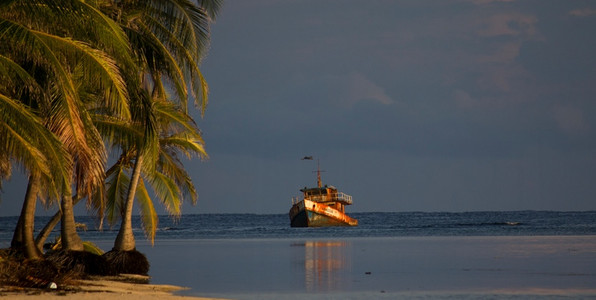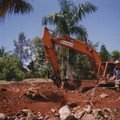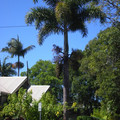Gallery
Click the thumbnails below to view image gallery:No beach or tropical island photo is complete without the proverbial palm in the background. But have you ever wondered how it got there and how it got so big? There are many ways to plant a palm but not all are effective, especially when planting in a beach or sandy area.
Know the right type of palms for the soil available
The beach more often than not has sandy soil. It provides good water drainage for plants that don't require too much moisture in the soil.
Examples of palms that grow on mostly sandy soil near the beach include: the Foxtail, Ponytail, Cocos, Spindle and Coconut. Although most plants need some sand to improve drainage, they also need a combination of other more dense and moist soil in order to thrive.
Be sure to plant only the palms that are compatible with the available soil. It would be impractical to grow palms that will struggle without the nutrients and minerals that they require from the type of soil that they really need.
Choose the best time to plant palms
Choosing the best time or season to plant a palm may determine how fast it will grow, how healthy it will be and if it will grow at all. Different palm variations have different weaknesses.
Take for example the coconut palm. It thrives very well with direct sunlight and regular rainfall but has a temperature threshold of 21oC. If the temperature drops lower for extended periods, growth will come to a halt.
If you live in an area where the temperature can drop during a monsoon, it would be best to plant a coconut palm immediately after that to encourage it to grow during the summer or dry season and have it ready for the next downpour.
Get to know your palm type and its strengths and weaknesses. Ask the seller if the palm is conditioned to your area.
Familiarize yourself with the climate and weather conditions
Palms need the right amount of moisture and sunlight in order to grow fully. Beach environments typically have sunlight for most of the year and experience moderate to heavy rain for 3-4 months. The air is also mostly humid and has moderate to heavy salt content.
Choose palms that like direct sunlight with little shade and can handle salt laden humid winds strong at times. Another variant is the Kentia Palm (Howea forsteriana). It grows well in the Australian sub-tropics and coastal areas. Young Kentias are sunburnt easily so choose older plants to plant on the beach. Ask when you buy how much the Kentia has been sun hardened otherwise the palm may take 2-4 years to adjust to full sun.
Choose a good spot to plant your palm taking into consideration wind strength and ease of access.
Here are some tips.
- Measure the palm's root ball and dig the hole with a six-inch allowance in depth and width.
- Plant the root balls an inch or two deeper than the soil level to create a sort of funnel for water to collect when watering the palm. The collected water will slowly ease into the roots.
- Before lowering the plant into the hole, water the soil it will sit in and compact it by using a shovel or your hands. This will help prevent the palm from sinking into the hole later on.
- When the plant is being lowered into the hole, you may want to rotate and adjust it to make sure it's showing its "good side." This may be the only time for you to be able to do this.
Palms for the Beach, Coconut (tropical) Cocos (cold, temperate) Kentia (temperate) Spindle (tropical, temperate) Foxtail (tropical temperate)
<< Previous PALMS AROUND SWIMMING POOLS | Back to Mullumbimby Palm Blog | Next >> Palms Of The World





